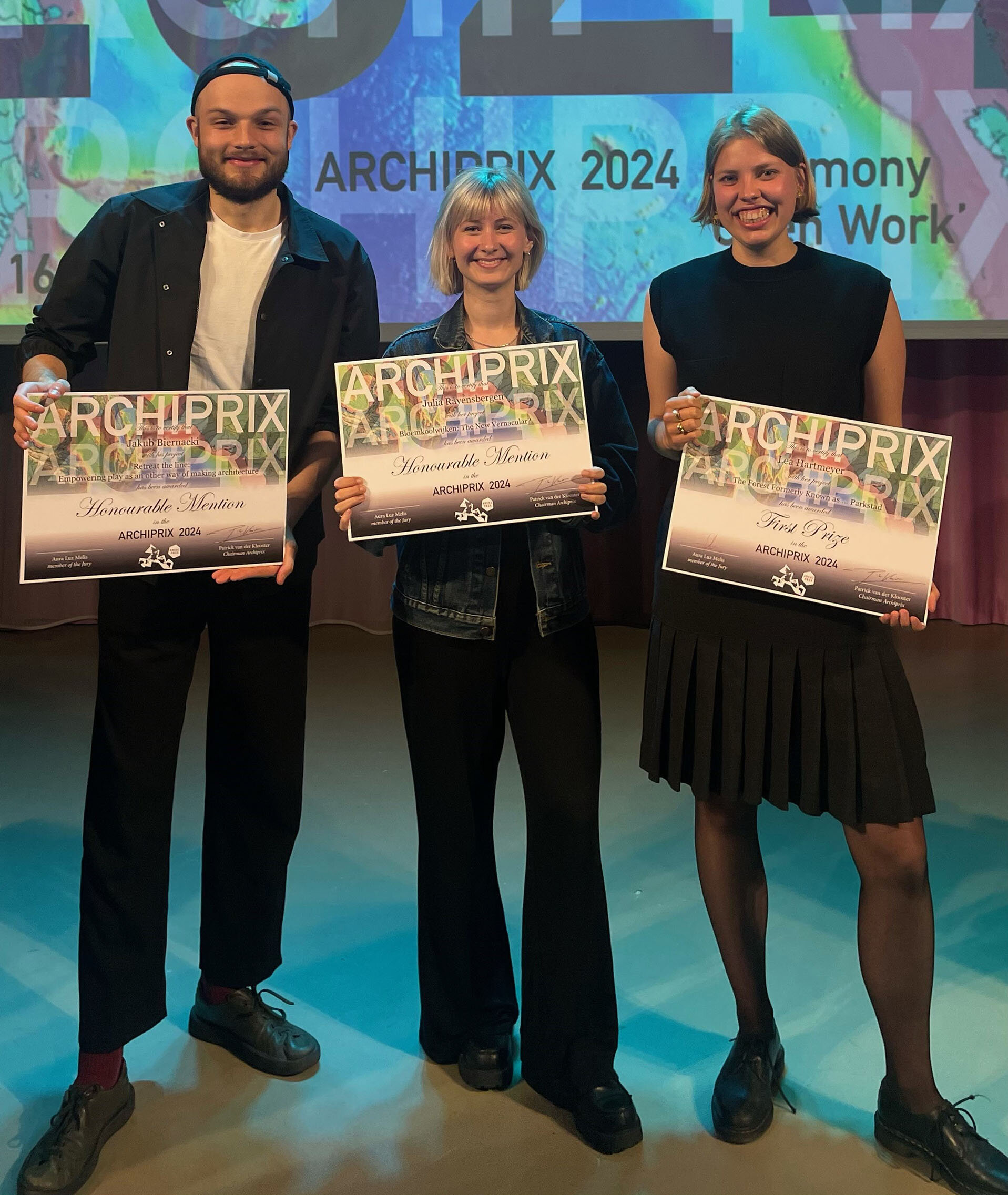Lea Hartmeyer one of the four winners Archiprix 2024
On Sunday, 16 June, an independent jury announced the winners of the National Archiprix 2024. Alumna Lea Hartmeyer of the Master Track Landscape Architecture is one of the four winners with ‘The Forest Formerly Known as… Parkstad’. Julia Ravensbergen (Building Technology) and Jakub Biernacki (Architecture) received honourable mentions. The Archiprix selects from the best graduation projects of Dutch master's programs with majors in architecture, urban planning, landscape architecture and the master's programs in interior architecture.
Jury
The jury consisted of Sereh Mandias, Jeroen van Mechelen, Aura Luz Melis, Wouter Pocornie, and Paul Roncken. There are four winners and three honourable mentions. The jury recognizes in all seven projects a freedom in the thinking, making, analysing and/or polemicizing of design briefs that the jury regards as urgent and relevant today. These projects are informed by a personal approach and an infectious idealism and ability to empathise that the jury finds affecting and worthy of further investigation. All seven focus firmly on the process and the design methods, which are made transparent and comprehensible in the presentations. In addition, the designers of these seven projects succeed in presenting the complex points of connection between research and design in a convincing manner.

Lea Hartmeyer and her graduation project
‘The jury was blown away by the project and has nothing but praise for the complex layering and thoroughness with which it is convincingly presented.’
This plan transforms the former mining area of Parkstad in South Limburg through a hybrid vision of city and landscape. The project introduces an extensive forest network to harmonise the relationship between humans and nature from a 'care' perspective, with concepts like responsibility, collectivity, and community spirit. The ambition is achieved by sketching a theoretical framework hitched to several concrete interventions that anchor the project in place.
‘This exceptional project stands out through its precision and clarity’, according to the jury.
René van der Velde, one of Lea's mentors, proudly says: ‘Lea's project not only pushes the boundaries of spatial design by outlining a radical future of the urban region as a 'lived forest,' she also challenges landscape architecture and other design disciplines to think about the notion of care, new paradigms such as urban forestry, and our role in the Anthropocene.’
Honourable mentions for Julia Ravensbergen and Jakub Biernacki
Bloemkoolwijken: The New Vernacular? – Julia Ravensbergen
This plan explores the use of regional biobased materials to retrofit poorly insulated homes in 1970s and 1980s housing enclaves known as ‘cauliflower neighbourhoods’ (bloemkoolwijken). By using locally grown raw materials for facade cladding, this hands-on project combines architecture and landscape in an accessible way. The designer successfully initiates a charm offensive and sparks debate on large-scale sustainability efforts for these neighbourhoods with a dated image from a renovation perspective.
‘This project succeeds in mobilizing a charm offensive and, from the perspective of renovation, engaging in the discourse on a largescale sustainability brief for these ‘cauliflower’ neighbourhoods with their outmoded image.’
Retreat the Line: Empowering Play as Another Way of Making – Jakub Biernacki
This project advocates for an inclusive and community-oriented architectural practice, inspired by the concept of the 'commons’. In Burgess Park, South London, four red pavilions are introduced as playfields for social interaction, using local materials and craftsmen. The presentation stands out with a long overview drawing and images of the community process, focusing on social engagement and a call for systemic change.
‘The project convinces in both words and images through its social engagement, which calls for a radical systemic change in the profession, something the jury embraces with in the current socio-political climate.’
More information
- Read the news item Winners Archiprix 2024
- Read the full jury report
- Read more about the project of Lea Hartmeyer
- Read more about the project of Julia Ravensbergen
- Read more about the project of Jakub Biernacki